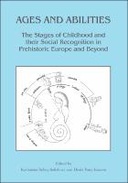Explore

Ages and Abilities
1 Ungluer has
Faved this Work
Login to Fave
Ages and Abilities explores social responses to childhood stages from the late Neolithic to Classical Antiquity in Central Europe and the Mediterranean and includes cross-cultural comparison to expand the theoretical and methodological framework. By comparing osteological and archaeological evidence, as well as integrating images and texts, authors consider whether childhood age classes are archaeologically recognizable, at which approximated ages transitions took place, whether they are gradual or abrupt and different for girls and boys. Age transitions may be marked by celebrations and rituals; cultural accentuation of developmental stages may be reflected by inclusion or exclusion at cemeteries, by objects associated with childhood such as feeding vessels and toys, and gradual access to adult material culture. Access to tools, weapons and status symbols, as well as children’s agency, rank and social status, are recurrent themes. The volume accounts for the variability in how a range of chronologically and geographically diverse communities perceived children and childhood, and at the same time, discloses universal trends in child development in the (pre-)historic past.
This book is included in DOAB.
Why read this book? Have your say.
You must be logged in to comment.
Rights Information
Are you the author or publisher of this work? If so, you can claim it as yours by registering as an Unglue.it rights holder.Downloads
This work has been downloaded 75 times via unglue.it ebook links.
- 75 - pdf (CC BY-NC-ND) at OAPEN Library.
Keywords
- Child
- Child & developmental psychology
- Developmental
- Psychology
- Society & Social Sciences
- thema EDItEUR::J Society and Social Sciences::JM Psychology::JMC Child, developmental and lifespan psychology
Editions

